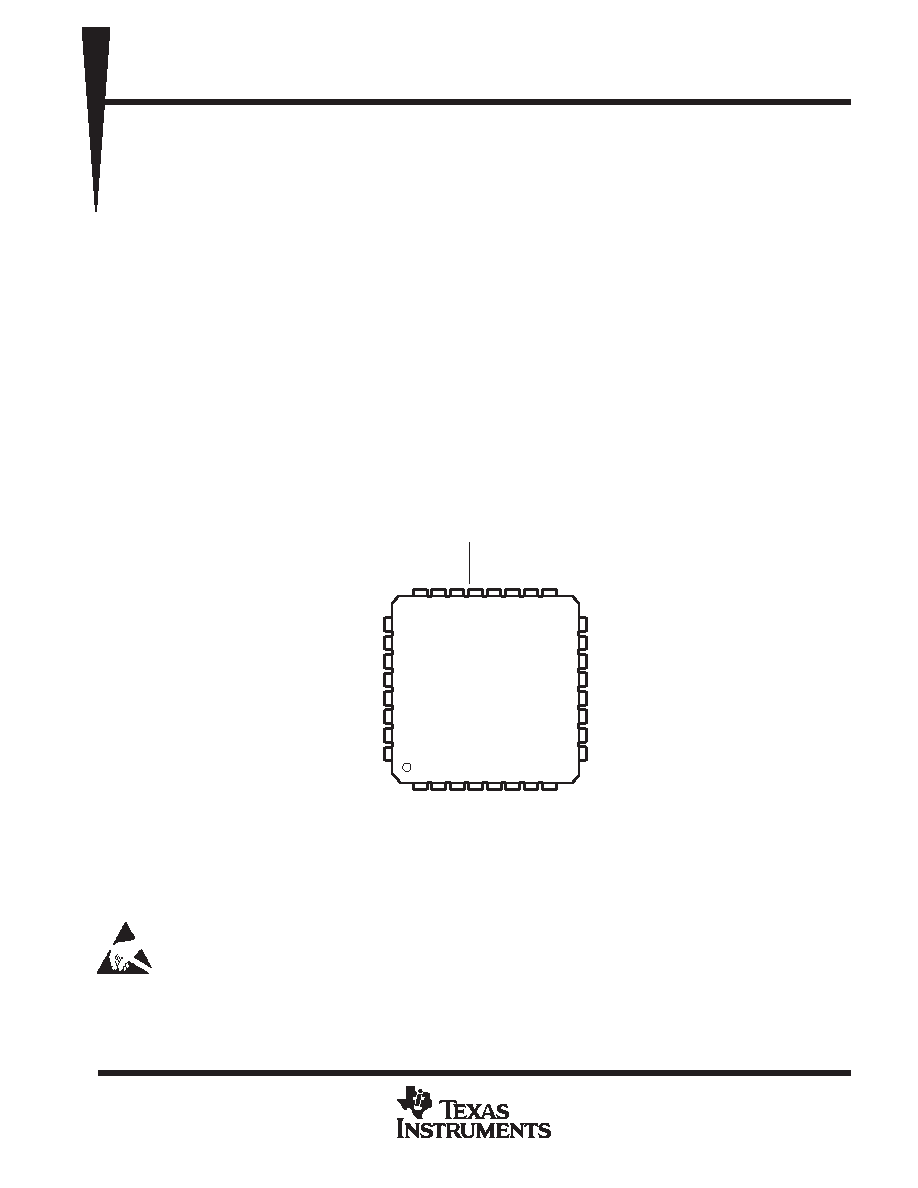- 您現(xiàn)在的位置:買賣IC網(wǎng) > PDF目錄98307 > TWL1102PBSR (TEXAS INSTRUMENTS INC) SPECIALTY CONSUMER CIRCUIT, PQFP32 PDF資料下載
參數(shù)資料
| 型號(hào): | TWL1102PBSR |
| 廠商: | TEXAS INSTRUMENTS INC |
| 元件分類: | 消費(fèi)家電 |
| 英文描述: | SPECIALTY CONSUMER CIRCUIT, PQFP32 |
| 封裝: | PLASTIC, TQFP-32 |
| 文件頁數(shù): | 1/29頁 |
| 文件大?。?/td> | 387K |
| 代理商: | TWL1102PBSR |
當(dāng)前第1頁第2頁第3頁第4頁第5頁第6頁第7頁第8頁第9頁第10頁第11頁第12頁第13頁第14頁第15頁第16頁第17頁第18頁第19頁第20頁第21頁第22頁第23頁第24頁第25頁第26頁第27頁第28頁第29頁

TWL1102
VOICE-BAND AUDIO PROCESSOR (VBAP
)
SLVS264 – NOVEMBER 1999
1
POST OFFICE BOX 655303
DALLAS, TEXAS 75265
D 2.7-V Operation
D Two Differential Microphone Inputs, One
Differential Earphone Output, and One
Single-Ended Earphone Output
D Programmable Gain Amplifiers for
Transmit, Receive, Sidetone, and Volume
Control
D Earphone Mute and Microphone Mute
D On-chip I2C-Bus, Which Provides a Simple,
Standard, Two-Wire Serial Interface With
Digital ICs
D Programmable for 15-Bit Linear Data or
8-Bit Companded (
-Law or A-Law) Data
D Available in a 32-Terminal TQFP Package
D Designed for Analog and Digital Wireless
Handsets and Telecommunications
Applications
D Dual-Tone Multi-Frequency (DTMF) and
Single Tone Generator
D Pulse Density Modulated (PDM) Buzzer
Output
description
The voice-band audio processor (VBAP) is designed to perform the transmit encoding analog/digital (A/D)
conversion and receive decoding digital/analog (D/A) conversion, together with transmit and receive filtering
for voice-band communications systems. The device operates in either the 15-bit linear or 8-bit companded
(-law or A-Law) mode, which is selectable through the I2C interface. From a 2.048-MHz master clock input,
the VBAP generates its own internal clocks.
PBS PACKAGE
(TOP VIEW)
31
30
29
28
27
9
10
PCMO
PCMI
DVSS
DVDD
SCL
SDA
NC
PLLVDD
EARVSS
EAR1ON
EARVDD
EAR1OP
EARVSS
EAR2O
AVDD
32
26
11
12
13
14
15
MBIAS
MIC1P
MIC1N
MIC2P
NC
16
25
1
2
3
45
67
8
24 23 22 21 20 19 18 17
MIC2N
REXT
AV
SS
MCLK
PLL
V
SS
V
SS
RESET
PWRUPSEL
BUZZCON
PCMSYN
PCMCLK
NC – No internal connection
This device contains circuits to protect its inputs and outputs against damage due to high static voltages or electrostatic fields. These
circuits have been qualified to protect this device against electrostatic discharges (ESD) of up to 2 kV according to MIL-STD-883C,
Method 3015; however, it is advised that precautions be taken to avoid application of any voltage higher than maximum-rated
voltages to these high-impedance circuits. During storage or handling, the device leads should be shorted together or the device
should be placed in conductive foam. In a circuit, unused inputs should always be connected to an appropriated logic voltage level,
preferably either VCC or ground. Specific guidelines for handling devices of this type are contained in the publication Guidelines for
Handling Electrostatic-Discharge-Sensitive (ESDS) Devices and Assemblies available from Texas Instruments.
Copyright
1999, Texas Instruments Incorporated
PRODUCTION DATA information is current as of publication date.
Products conform to specifications per the terms of Texas Instruments
standard warranty. Production processing does not necessarily include
testing of all parameters.
VBAP is a trademark of Texas Instruments Incorporated.
相關(guān)PDF資料 |
PDF描述 |
|---|---|
| TWL1103PBS | SPECIALTY CONSUMER CIRCUIT, PQFP32 |
| TWL1103PBSR | SPECIALTY CONSUMER CIRCUIT, PQFP32 |
| TWL1103GQER | SPECIALTY CONSUMER CIRCUIT, PBGA80 |
| TWL1103TPBSQ1 | SPECIALTY CONSUMER CIRCUIT, PQFP32 |
| TWL1103TPBSRQ1 | SPECIALTY CONSUMER CIRCUIT, PQFP32 |
相關(guān)代理商/技術(shù)參數(shù) |
參數(shù)描述 |
|---|---|
| TWL1103 | 制造商:TI 制造商全稱:Texas Instruments 功能描述:VOICE-BAND AUDIO PROCESSOR VBAPE |
| TWL1103GQE | 制造商:Rochester Electronics LLC 功能描述:- Bulk 制造商:Texas Instruments 功能描述: |
| TWL1103GQER | 功能描述:VOICE BAND AUDIO PROC 80-BGA RoHS:否 類別:集成電路 (IC) >> 線性 - 音頻處理 系列:VBAP™ 其它有關(guān)文件:STA321 View All Specifications 標(biāo)準(zhǔn)包裝:1 系列:Sound Terminal™ 類型:音頻處理器 應(yīng)用:數(shù)字音頻 安裝類型:表面貼裝 封裝/外殼:64-LQFP 裸露焊盤 供應(yīng)商設(shè)備封裝:64-LQFP EP(10x10) 包裝:Digi-Reel® 其它名稱:497-11050-6 |
| TWL1103PBS | 制造商:Rochester Electronics LLC 功能描述:- Bulk |
| TWL1103PBSR | 制造商:Rochester Electronics LLC 功能描述:- Bulk |
發(fā)布緊急采購,3分鐘左右您將得到回復(fù)。